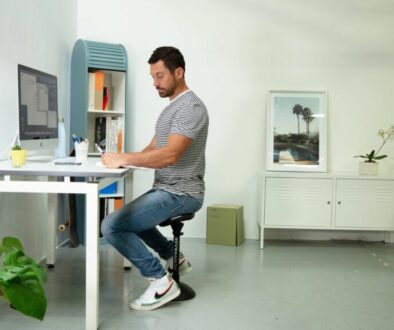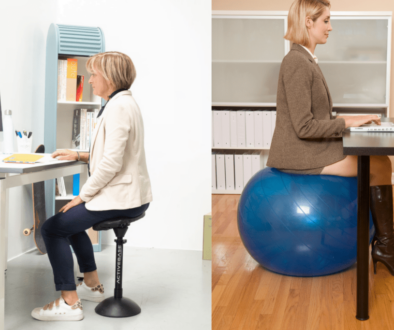Comment prévenir des TMS au bureau ?
Les TMS, qu’est-ce que c’est ?
Les TMS, c’est quoi ? Les troubles musculo-squelettiques ou TMS représentent 85% des maladies professionnelles. Autant dire que nous sommes tous concernés! Ils se manifestent par des douleurs et une gêne dans les mouvements. Les plus courants sont les tendinites de l’épaule, l’épicondylite (coude), le syndrome du canal carpien (poignet) et les lombalgies (mal de dos). Ils peuvent être causés de façons multiples : poste de travail mal adapté, mauvaise position ou position trop statique, soulever ou déplacer de lourdes charges, vibrations, froid… Également, certains facteurs comme le sexe, l’âge ou l’état de santé (diabète, rhumatisme…) peuvent augmenter les risques.
Facteurs déclencheurs de TMS :
Il existe de nombreux facteurs pouvant être à l’origine des TMS :
Le travail sur écran
Une personne ayant des problèmes de vu travaillant de manière prolongée sur écran peut se voir dans l’obligation de devoir adopter une mauvaise position pouvant entraîner des douleurs au niveau des cervicales.
Également, le travail sur écran peut entraîner une fatigue visuelle importante favorisant l’apparition de diverses pathologies visuelles.
Ses manifestations sont des sensations de lourdeur des globes oculaires, des rougeurs, des picotements, des éblouissements, une myopie temporaire, les yeux secs, des maux de tête…
Une mauvaise posture
Le maintien d’une position statique prolongée peut engendrer une fatigue musculaire. Au travail, nous sommes généralement contraints de rester assis durant de longues heures, or, cette posture n’est pas naturelle pour les Homo-Sapiens et sommes directement exposés à un risque de développement des TMS (Troubles Musculosquelettiques). Une mauvaise position assise, sur la durée, peut avoir des conséquences lourdes qui se répercutent directement sur notre santé à la fois physique et mentale.
Un poste de travail mal aménagé
L’aménagement de son poste de travail est essentiel. Un écran trop haut ou trop bas, des documents placés entre le clavier et le salarié, l’appuie continuel des poignets pendant la frappe… Peuvent entraîner des douleurs au niveau des cervicales ou des poignets par exemple.
Le stress
Le stress est lui considéré comme un cofacteur d’apparition des TMS. Pour faire face à la situation, le système nerveux libère dans l’organisme des molécules (adrénaline et cortisol) pouvant être responsables de contractures musculaires. Associé à des postures inappropriées et/ou répétitives, le stress augmente les risques d’être atteint de TMS.
Des solutions ergonomiques pour y remédier :
Les TMS au bureau sont fréquents alors que des moyens très simples d’y remédier existent. À commencer par une bonne position assise.
Voici quelques petites bonnes pratiques à appliquer :
Aménager son poste de travail :
- Bien régler la luminosité de l’écran et adapter les caractères en fonction de ses capacités visuelles,
- Privilégier la lumière naturelle et aérer la pièce,
- Clavier, à plat, à une distance de 10-15 cm du bord du bureau,
- Opter pour du mobilier de bureau ergonomique,
- Décorer votre espace de bureau à votre goût.

Adopter la bonne posture :
- Dos droit ou légèrement en arrière,
- Cuisses à l’horizontale, pieds à plat sur le sol,
- Bras et avant-bras en angle droit,
- Poignets flottants lors de la frappe ou de l’usage de la souris.
Mieux organiser son temps :
- Faire des pauses visuelles,
- Prendre des pauses de manière régulière et s’étirer,
- Ne pas sauter la pause déjeuner.
Ces quelques petits changements vous changeront la vie, alors, prenez votre santé en main !





